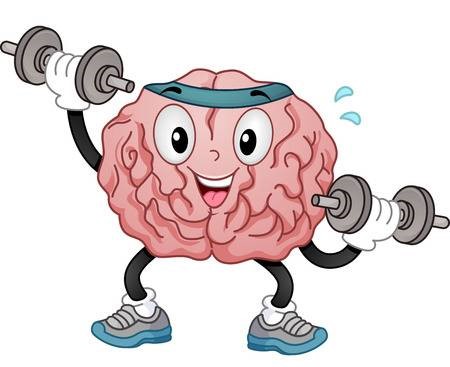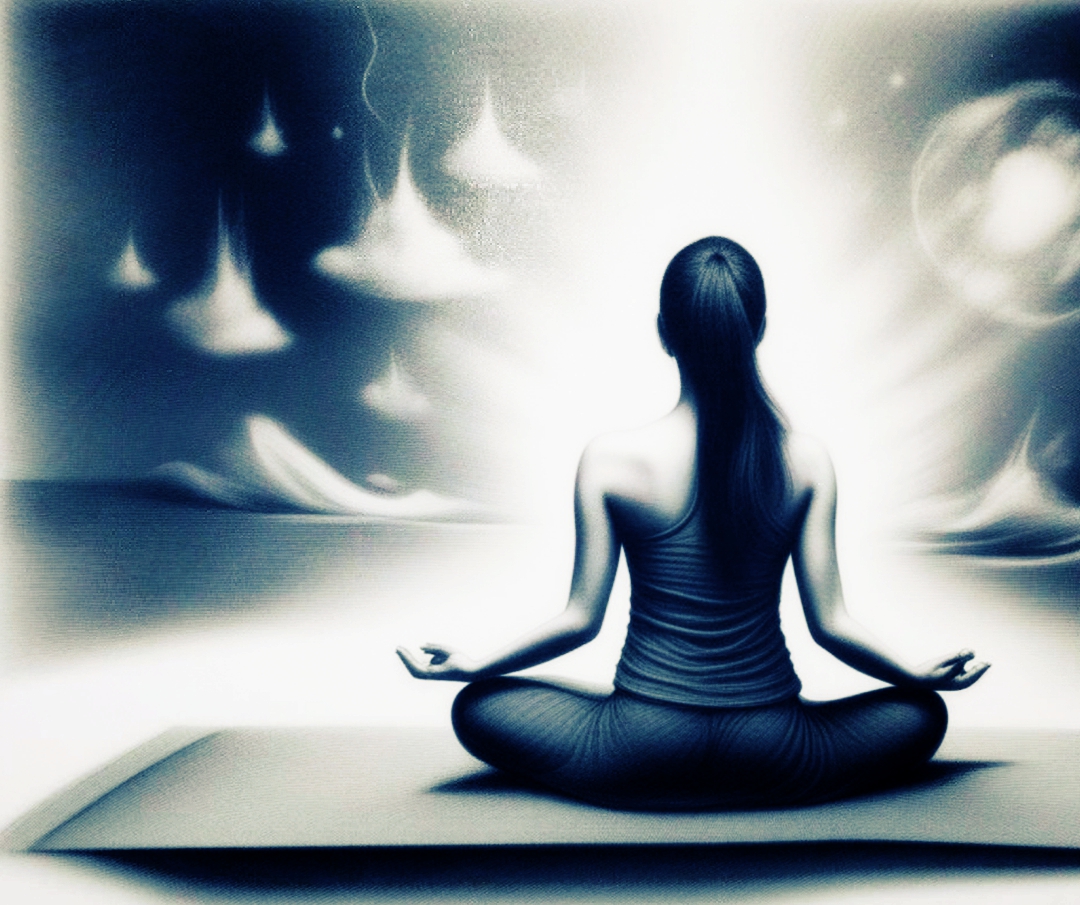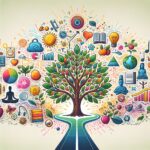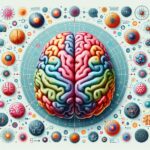Article-at-a-Glance
- Visualization techniques can significantly improve your mood, boost memory, and enhance problem-solving skills.
- Practicing visualization daily can increase emotional resilience and mental clarity, helping you manage stress better.
- Simple techniques like vision boards, meditation, and guided imagery are effective and easy to incorporate into your routine.
- Visualization is not just for mental benefits; it can also enhance physical performance in sports and other activities.
- Consistent practice and a focused mindset are key to seeing tangible benefits from visualization techniques.
Visualization: Transform Your Day-to-Day Life
Have you ever imagined yourself achieving a goal and then felt a surge of motivation? That’s the power of visualization at work. Visualization is a mental technique that can dramatically transform your daily life by improving your mental and emotional well-being. It’s not just about daydreaming; it’s a structured method to help you realize your full potential.
Visualization involves creating vivid mental images to influence your thoughts, feelings, and actions. By harnessing this power, you can make positive changes in your life. Let’s dive into how visualization can become a game-changer in your everyday routine.

“5 Visualization Techniques to Help You …” from www.betterup.com and used with no modifications.
What is Visualization and Its Influence on the Brain
Visualization taps into the brain’s natural tendency to process visual information. Our brains are wired to respond to images, making visualization a powerful tool for influencing our mental state. When you visualize, your brain interprets these images as reality, triggering a series of psychological and physiological responses.
“Our imagination provides a powerful vehicle for exploring aspects of the self and promoting behavioral change.” – Thomas, 2016
By regularly practicing visualization, you create neural pathways that enhance your ability to achieve goals and manage emotions. It’s like mental rehearsal, where your brain trains itself to perform better in real-life situations.
Real-Life Impact on Emotions and Mental State
Visualization can have a profound impact on your emotions and mental state. It can help you cultivate positive emotions like optimism and reduce negative feelings such as anxiety. For instance, visualizing a peaceful scene can instantly calm your mind and lower stress levels.
Many people use visualization to prepare for challenging situations, such as public speaking or job interviews. By visualizing success, you can reduce anxiety and boost confidence. The mental rehearsal helps you feel more prepared and in control, leading to better outcomes.
Cognitive and Emotional Advantages of Visualization

“Exercise on Cognitive Ability …” from ricecatalyst.com and used with no modifications.
Enhancing Memory and Learning Abilities
Visualization is not only beneficial for emotional well-being but also for cognitive functions like memory and learning. When you visualize information, you’re more likely to remember it. This technique is particularly useful for students and professionals who need to retain large amounts of information.
For example, visualizing a story or concept can make it easier to recall details later. This is because visualization engages multiple parts of the brain, strengthening memory retention. Try visualizing your study material or presentation to see how it enhances your recall abilities.
Improving Emotional Resilience
Building emotional resilience is crucial for handling life’s ups and downs. Visualization can help you develop this resilience by allowing you to mentally rehearse responses to challenging situations. By picturing yourself overcoming obstacles, you build confidence and emotional strength.
Moreover, visualization can help you reframe negative experiences, turning them into opportunities for growth. This shift in perspective can boost your overall mental health and well-being, making you more adaptable to change.
Promoting Mental Clarity and Focus
In today’s fast-paced world, maintaining mental clarity and focus is essential. Visualization can aid in achieving this by training your mind to concentrate on specific goals and tasks. When you visualize your objectives, you create a clear mental roadmap that guides your actions. For more techniques, explore visualization in therapy to enhance your focus and clarity.
This focused mindset not only enhances productivity but also reduces mental clutter. By visualizing your priorities, you can filter out distractions and stay on track, leading to more effective decision-making.
Vision Boards for Goal Setting
Creating a vision board is a powerful visualization technique that can help you focus on your goals and dreams. A vision board is a collage of images, words, and affirmations that represent what you want to achieve in life. By placing it somewhere you see every day, it serves as a constant reminder of your aspirations, keeping you motivated and inspired.
To create a vision board, start by identifying your goals. What do you want to achieve in the next year or even the next five years? Gather images and words from magazines, online sources, or personal photos that resonate with these goals. Arrange them on a board in a way that feels meaningful to you. The key is to make it visually appealing so that it draws your attention and reinforces your intentions daily. For more on setting goals, explore these types of expectations and their influence on daily life.

“Visualization during Meditation can …” from www.imagindi.com and used with no modifications.
Visualization Meditation for Relaxation
Visualization meditation is an effective way to relax and reduce stress. It involves closing your eyes and imagining a peaceful scene, such as a beach, forest, or mountain. As you immerse yourself in this mental image, your body begins to relax, and your mind becomes calmer. For additional techniques on enhancing focus and relieving stress, explore these centering techniques.
To practice visualization meditation, find a quiet place where you won’t be disturbed. Sit comfortably, close your eyes, and take a few deep breaths. Picture a serene environment and focus on the details, like the sound of waves or the smell of pine trees. Allow yourself to be fully present in this mental space, letting go of any tension or worries. Regular practice can lead to a more relaxed and peaceful state of mind.
Guided Imagery for Emotional Healing
Guided imagery is a visualization technique used for emotional healing and personal growth. It involves listening to a recording or following a script that guides you through a series of mental images. This process can help you explore emotions, release negative thoughts, and cultivate positive feelings.
Guided imagery can be particularly helpful for those dealing with anxiety, depression, or trauma. By visualizing positive outcomes and emotional healing, you can shift your mindset and foster resilience. Many guided imagery scripts are available online, or you can create your own based on your personal needs. As you practice, you’ll find it easier to manage your emotions and enhance your overall well-being. For additional support, consider exploring adaptability tips to cultivate an adaptable mindset.
Applying Visualization Techniques in Different Areas
Visualization techniques can be applied to various aspects of life, providing benefits beyond just mental and emotional well-being. Whether you’re looking to improve your relationships, boost academic performance, or enhance physical health, visualization can be a valuable tool. For instance, using centering techniques for focus can significantly aid in stress relief and improve concentration.
By integrating these techniques into different areas of your life, you can create a holistic approach to personal development. Let’s explore how visualization can make a difference in relationships, academics, and sports.
Relationship and Social Interaction Enhancement
Visualization can improve your relationships and social interactions by helping you develop empathy and understanding. By imagining yourself in someone else’s shoes, you can gain insight into their feelings and perspectives. This practice can enhance communication and strengthen connections.
Additionally, visualizing positive interactions can boost your confidence in social situations. Picture yourself engaging in meaningful conversations, listening actively, and responding with empathy. As you practice, you’ll find it easier to navigate social settings and build stronger relationships.
Academic and Professional Performance Improvements
In the academic and professional realms, visualization can be a game-changer. By visualizing success, you can increase your motivation and focus, leading to improved performance. Imagine yourself excelling in exams, delivering successful presentations, or achieving career milestones.
This mental rehearsal prepares your brain for real-life challenges, boosting your confidence and reducing anxiety. Visualization can also help you set clear goals and create a roadmap for achieving them, making it easier to stay on track and accomplish your objectives. To explore more about how different brain regions contribute to this process, you can read about brain areas and functions.
Sports Performance and Physical Health Benefits
Athletes have long used visualization to enhance their performance. By mentally rehearsing their moves, they can improve muscle memory, coordination, and overall performance. Visualization helps athletes focus on their goals, overcome obstacles, and achieve peak performance.
Beyond sports, visualization can also support physical health by promoting relaxation and stress reduction. Visualizing yourself in a state of health and vitality can encourage positive lifestyle changes and improve your overall well-being. Discover more about optimism techniques that can complement your visualization practices.

“CREATIVE VISUALIZATION MEDITATION …” from gemsofyogadubai.com and used with no modifications.
Practical Steps for Effective Visualization
To get the most out of visualization techniques, it’s essential to practice them consistently and with intention. Here are some practical steps to help you master the art of visualization:
Crafting Realistic and Detailed Mental Images
The key to effective visualization is creating vivid and detailed mental images. The more realistic your visualization, the more powerful its impact. Focus on the sensory details, such as colors, sounds, and textures, to make your mental images come alive.
For example, if you’re visualizing a successful presentation, imagine the room, the audience’s reactions, and your confident delivery. By engaging all your senses, you create a more immersive experience that strengthens the connection between your mind and body.
Combining Visualization with Physical Practices
Visualization becomes even more powerful when combined with physical practices. This synergy can enhance the effectiveness of both the mental and physical aspects of your routine. For instance, athletes often visualize their performance before engaging in physical training, which helps in refining their techniques and boosting confidence. To explore more on how visualization can aid in centering techniques for focus, check out this resource.
Incorporating visualization into your exercise routine can also be beneficial. Imagine the muscles you’re working on growing stronger with each repetition. This mental focus can improve your form and increase the effectiveness of your workout. By aligning your mental images with physical actions, you create a holistic approach to personal development that amplifies results. For more on enhancing focus and stress relief, explore these centering techniques.
Consistent Practice and Mindset Development
Consistency is key when it comes to visualization. Like any skill, it requires regular practice to see tangible results. Set aside a specific time each day to engage in visualization exercises. This could be in the morning to set a positive tone for the day or in the evening to unwind and reflect.
Moreover, developing a growth mindset is crucial for maximizing the benefits of visualization. Believe in your ability to change and improve. Visualize not just the end goals but also the journey and the small steps that lead to success. This mindset encourages resilience and persistence, helping you overcome challenges along the way.
Remember, visualization is not a magic solution but a powerful tool that, when combined with action and consistency, can lead to significant personal growth and well-being.
Frequently Asked Questions (FAQ)
Understanding how visualization works and how to apply it effectively can help you make the most of this technique. Here are some common questions and answers about visualization techniques:
How does visualization affect brain function?
Visualization affects brain function by engaging multiple neural pathways. When you visualize an activity or outcome, your brain activates similar areas as it would if you were physically performing the action. This mental rehearsal strengthens neural connections, enhancing your ability to execute tasks in real life. To understand more about how different brain areas and functions are involved, explore the key regions explained in this article.
- Visualization improves focus and concentration by training your brain to filter out distractions.
- It enhances memory retention by creating vivid mental images that are easier to recall.
- Regular practice can increase creativity and problem-solving abilities by encouraging flexible thinking.
By understanding the brain’s response to visualization, you can harness its power to improve cognitive functions and achieve your goals more effectively.
Can visualization techniques reduce stress and anxiety?
Yes, visualization techniques can significantly reduce stress and anxiety. By creating calming mental images, you can shift your focus away from stressors and cultivate a sense of peace and relaxation.
Visualization can also help you reframe negative thoughts and develop a more positive outlook. By visualizing successful outcomes and positive scenarios, you train your mind to focus on possibilities rather than limitations.
Incorporating visualization into your daily routine can enhance your emotional resilience and provide a valuable tool for managing stress and anxiety.
- Practice visualization meditation to calm your mind and reduce tension.
- Use guided imagery to explore emotions and promote healing.
- Visualize positive outcomes to boost confidence and reduce fear.
What are simple visualization exercises for beginners?
For beginners, starting with simple visualization exercises can help you build confidence and develop your skills. Here are a few exercises to try:
- Relaxation Visualization: Close your eyes and imagine a peaceful scene, such as a beach or forest. Focus on the details and allow yourself to relax in this mental space.
- Goal Visualization: Picture yourself achieving a specific goal. Visualize the steps you’ll take and the positive emotions you’ll experience upon reaching your goal.
- Positive Affirmations: Combine visualization with affirmations by imagining yourself embodying positive qualities, such as confidence or resilience.
Is visualization effective for children and teenagers?
Visualization can be highly effective for children and teenagers, helping them develop focus, confidence, and emotional resilience. It’s a versatile tool that can be adapted to suit their unique needs and interests.
For example, young athletes can use visualization to improve their performance in sports, while students can visualize success in exams or presentations. Visualization can also help children manage stress and anxiety by providing a safe space to explore emotions and practice coping strategies.
Encouraging children and teenagers to engage in regular visualization exercises can support their personal growth and development, setting them up for success in various aspects of life. Understanding the brain areas and functions involved in visualization can further enhance the effectiveness of these exercises.
How often should I practice visualization to see results?
To see tangible results from visualization, it’s important to practice regularly. Consistency is key, and incorporating visualization into your daily routine can lead to the most significant benefits.
Visualization techniques have become an integral part of many people’s daily routines, providing a way to improve mental clarity and focus. By practicing visualization, individuals can enhance their ability to concentrate and achieve their goals more effectively. Additionally, visualization can be a powerful tool for stress relief, allowing people to imagine themselves in calming and peaceful environments. For those interested in exploring more about how visualization can aid in focus and stress relief, there are numerous centering techniques available that can complement these practices.










Leave a Reply